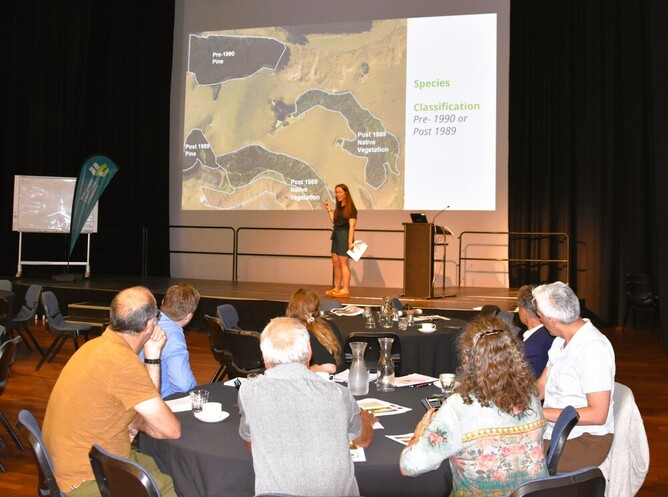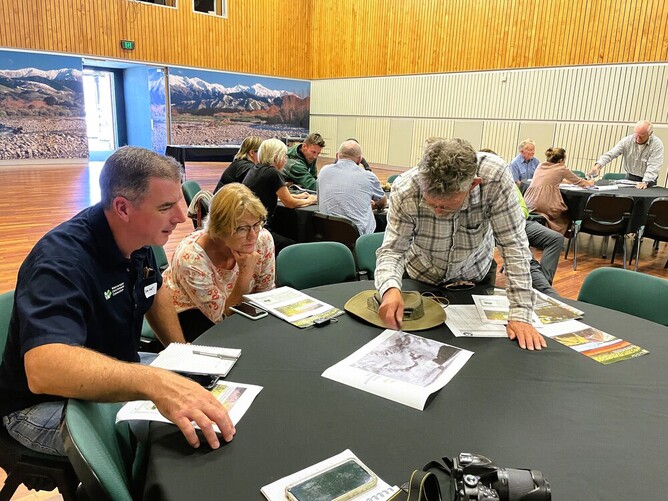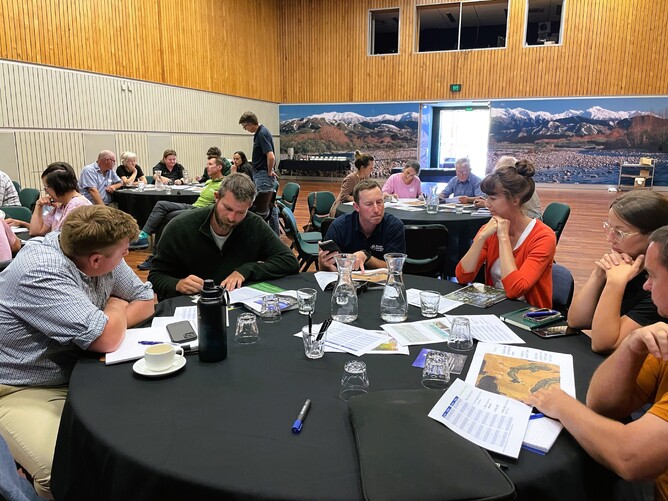The recent Native Forests Workshop, hosted by the Wairarapa Catchment Collective, Te Uru Rākau, the Ministry for the Environment, and Greater Wellington, provided insights into the establishment and management of native forests in New Zealand.
Covering practical forest-growing techniques, environmental financing opportunities, and the role of the Emissions Trading Scheme (ETS), the workshop brought together experts and landowners to explore the future of native forestry.
Speakers
Ben Disney: Regional Forestry Advisor, MPI-TUR NZ Forest Service
Pat Hawinkels: Specialist Advisor Technical, MPI-TUR NZ Forest Service
Michelle McCabe: Catchment Advisor, Greater Wellington
Andrew Marshall: Principal Advisor, Ministry of the Environment
Dr. Adam Forbes: Forbes Ecology Limited
Why grow native forests?
Native forests offer a range of ecosystem benefits, from carbon sequestration and erosion control to water regulation and biodiversity enhancement. They also provide opportunities for sustainable income, such as honey production and carbon credit
Methods of establishment
Natural reversion: Letting nature take its course, given the right conditions (local seed source, rainfall, temperature, and pest control).
Assisted reversion: Planting seedlings to speed up natural recovery, ideal for degraded lands.
Reconstruction: Using faster-growing exotic species to create a protective canopy for native regeneration.
Transition forests: Managing grazing, pest control, and protecting remnants to encourage natural succession.
Best practices for success
Choose eco-sourced, site-appropriate species.
Plant in clusters rather than a grid to support natural growth patterns.
Use nurse species like kānuka and mānuka to help establish a resilient ecosystem.
Control weeds and browsing animals consistently.
Understanding the Emissions Trading Scheme (ETS) for indigenous planting
The ETS provides a financial incentive for landowners to establish native forests or encourage regeneration by allowing them to earn carbon credits for post-1989 forest growth.
Pre-1990 forests: Considered part of NZ’s baseline carbon stock, meaning no ETS units can be earned.
Post-1989 forests: Eligible for ETS participation, allowing landowners to earn carbon credits.
Eligibility: Forest land must be at least 1 hectare, contain tree species capable of reaching 5m in height, average of 30m width and have at least 30% canopy cover at maturity.
Planning for ETS: Mapping land history, identifying eligible areas, and managing reforestation effectively are critical for maximizing carbon returns.
New opportunities in environmental financing
Growing corporate interest in biodiversity and carbon removals is leading to emerging financing mechanisms beyond the ETS:
Voluntary biodiversity credits: These work similarly to carbon credits and are starting to gain traction in New Zealand.
Nature-based carbon removals: An increasingly popular market internationally, rewarding sustainable forestry and conservation efforts.
Hybrid and regulated markets: Government-led or industry-driven approaches are developing to support nature conservation financially.
Assisted Natural Regeneration (ANR) – A Balanced Approach
ANR blends active planting with passive restoration, where human intervention helps speed up natural forest regeneration by removing obstacles such as pests and weeds.
ANR Methods
Enrichment treatments: Planting missing species or seeding native plants.
Competition treatments: Managing canopy gaps to ensure light and resources for healthy growth.
Preservation treatments: Protecting seedlings from threats like browsing animals and wildfires.
Example: Waingake Transformation Programme A 1,200-hectare project transitioning a pine plantation into native forest, showcasing how careful planning, pest control, and enrichment planting can drive large-scale forest restoration. Learn more: www.gdc.govt.nz/council/major-projects/waingake-restoration
Summary
The workshop emphasised the importance of choosing the right establishment approach, understanding ETS opportunities, and leveraging emerging financial incentives to support native forests. With a mix of active and passive restoration strategies, landowners can create resilient, biodiverse, and financially viable native forests in New Zealand.





